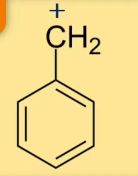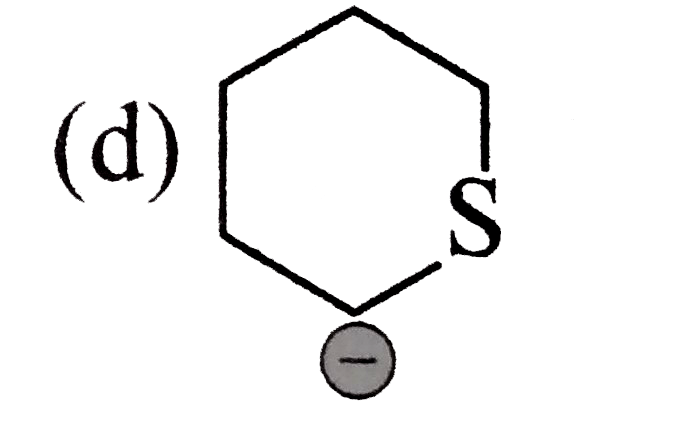In which of the following, resonance is not possible?




To determine in which of the given options resonance is not possible, we need to analyze each structure based on the concept of resonance and conjugation.
1. Understanding Resonance:
- Resonance occurs when there are multiple valid Lewis structures for a molecule, where the electrons can be delocalized. This typically happens when there are alternating double and single bonds (conjugation) or lone pairs adjacent to double bonds.
2. Analyzing Each Option:
- Option A: CH2=CH-CH2^+
- Here, we have a positive charge adjacent to a double bond. The positive charge can participate in resonance as it is in conjugation with the double bond. Therefore, resonance is possible in this structure.
- Option B: CH2=CH-CH=CH2
- In this structure, we have two double bonds next to each other. There is no single bond between them to allow for resonance. Thus, resonance is not possible here.
- Option C: CH2^+-CH=CH2
- This structure has a positive charge adjacent to a double bond. The positive charge can shift to create resonance structures. Therefore, resonance is possible in this structure.
- Option D: CH3-CH=CH2^+
- Similar to option C, the positive charge is adjacent to a double bond, allowing for resonance. Therefore, resonance is possible in this structure as well.
3. Conclusion:
- Based on the analysis, resonance is not possible in Option B (CH2=CH-CH=CH2) and Option D (CH3-CH=CH2^+).
Final Answer:
Resonance is not possible in Option B.
- Resonance occurs when there are multiple valid Lewis structures for a molecule, where the electrons can be delocalized. This typically happens when there are alternating double and single bonds (conjugation) or lone pairs adjacent to double bonds.
- Option A: CH2=CH-CH2^+
- Here, we have a positive charge adjacent to a double bond. The positive charge can participate in resonance as it is in conjugation with the double bond. Therefore, resonance is possible in this structure.
- Option B: CH2=CH-CH=CH2
- In this structure, we have two double bonds next to each other. There is no single bond between them to allow for resonance. Thus, resonance is not possible here.
- Option C: CH2^+-CH=CH2
- This structure has a positive charge adjacent to a double bond. The positive charge can shift to create resonance structures. Therefore, resonance is possible in this structure.
- Option D: CH3-CH=CH2^+
- Similar to option C, the positive charge is adjacent to a double bond, allowing for resonance. Therefore, resonance is possible in this structure as well.
- Based on the analysis, resonance is not possible in Option B (CH2=CH-CH=CH2) and Option D (CH3-CH=CH2^+).
Resonance is not possible in Option B.
Similar Questions
Knowledge Check
Resonance is not possible in
A B
B C
C D
D
In which of the following, will resonance be possible?
ACH2=CH−CH2−CHOBCH2=CH−CH=OCCH3COCH3DCH2=CH−CH2−CH=CH2Resonance is not possible in:
A B
B CCH2=CH−ClD
CCH2=CH−ClD
Which of the following resonance form is most stable ?
View SolutionIn which of the following, resonance of −NH2 group is possible ?
View SolutionWhich of the following exhibits resonance?
View SolutionWhich of the following resonating structures is not correct for CO2 ?
View SolutionWhich of the following resonating form is not correct for CO2?
View Solution
